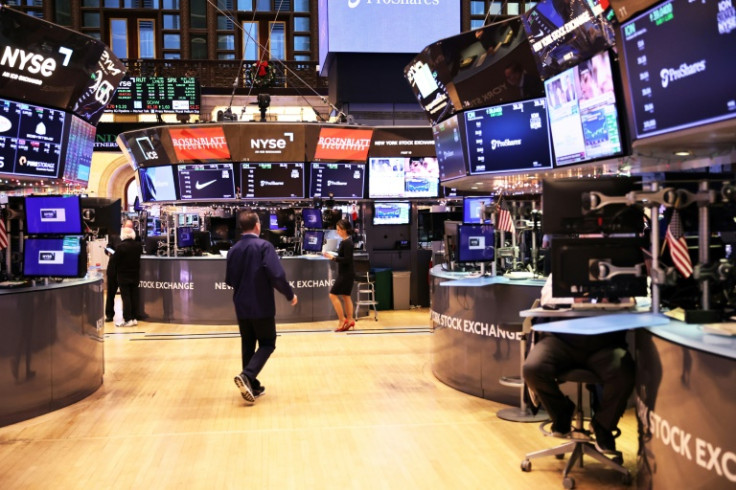Stock Sell-Off Deepens On Rising Bond Yields, Mixed Earnings – Is There An End In Sight?

The sell-off in U.S. equities, which began in August, gained momentum last week, with all major equity averages posting hefty losses.
The S&P 500 ended the week at 4,224, down 3.17% for the week; the Dow Jones at 33,127, down 2.3% and the tech-heavy Nasdaq at 12,983, down 3.6%.
Equities came under pressure from a spike in bond yields. The benchmark 10-year bond yield rose from 4.68% at the beginning of the week to 4.92% at the end. These are levels not seen since April 2007, a few months before the stock market crash and the beginning of the Great Recession of 2008-9.
The U.S. Treasury bond market has been in a perfect storm lately brewed by several factors. One is the resilience of the U.S. economy, as evidenced by the better-than-expected September job market and retail sales reports. They raise the prospect of inflation remaining elevated for much longer, putting pressure on the long end of the yield curve.
Then there's a wave of new bond offerings by the U.S. government to pay for the growing government deficits, which doubled in 2023, reaching $1.7 trillion.
And there's the reversing of Quantitative Easing (QE), adding to the supply pressure of the bond market.
Meanwhile, equities didn't get any help from the earnings season, which shifted into higher gear last Wednesday when Netflix and Tesla posted earnings. Netflix's earnings beat analyst estimates, while Tesla's earnings missed them. Thus, the wild gyrations seen in Nasdaq's shares toward the end of the week.
Then there's valuation. Even after the market sell-offs, they remain elevated. The Dow-Jones trades with a P/E of 23, up from 19.32 a year ago; the S&P 500 at 19.15, up from 18.27 and the Nasdaq at 29.89, up from 23.07.
These valuations suggest that the sell-off in equities may be over once the bulls get some help from better third-quarter earnings or lower interest rates.
But the picture is cloudy for bulls on the earnings front. As Netflix's and Tesla's reports indicated last week, earnings are on a mixed start, which is confirmed by FactSet, the agency that monitors the financial performance of S&P 500 companies.
"Overall, 17% of the companies in the S&P 500 have reported actual results for Q3 2023 to date," said John Butters, vice president of FactSet, in an updated post on Oct. 20. "Of these companies, 73% have reported actual EPS above estimates, below the 5-year average of 77% and slightly below the 10-year average of 74%. In aggregate, companies are reporting earnings that are 6.6% above estimates, which is below the five-year average of 8.5% but equal to the 10-year average of 6.6%."
But that may change next week when tech heavyweights like Microsoft and Alphabet report earnings. They all have a history of beating earnings expectations. But past performance isn't a guarantee for future performance, as the adage goes on Wall Street.
The picture could be more apparent on the future of the interest rate front, too. In an interview during a New York Economic Club appearance, Fed Chair Powell dashed Wall Street's hopes for a monetary policy pivot.
"Jerome Powell continues to walk a middle line between hawk and dove," David Russell, global head of market strategy at TradeStation, told International Business Times. "The Fed still isn't sure whether it's done enough. He noted positives in the labor market, but it's hard to get too dovish given this week's retail sales and jobless claims. So, he's keeping his options open and waiting for more clarity before committing either way."
Ryan Detrick, chief market strategist at Carson Group, agrees. "Overall, Jerome Powell didn't rock the boat, and the general takeaway was on the dovish side," he told IBT. "Inflation is still a worry, but with the economy healthy and policy restrictive, they will likely continue to take a wait-and-see approach."
Still, Detrick remains optimistic that the Fed is done hiking rates as risks as higher bond yields have done the hard job for the Fed. "Many Fed members have recently made clear that higher yields may make future rate hikes less urgent, in a way doing the Fed's job for them," he added. "The worry was Powell would take the other side and come in a tad hawkish, but he hit it right down the middle."
© Copyright IBTimes 2024. All rights reserved.





















